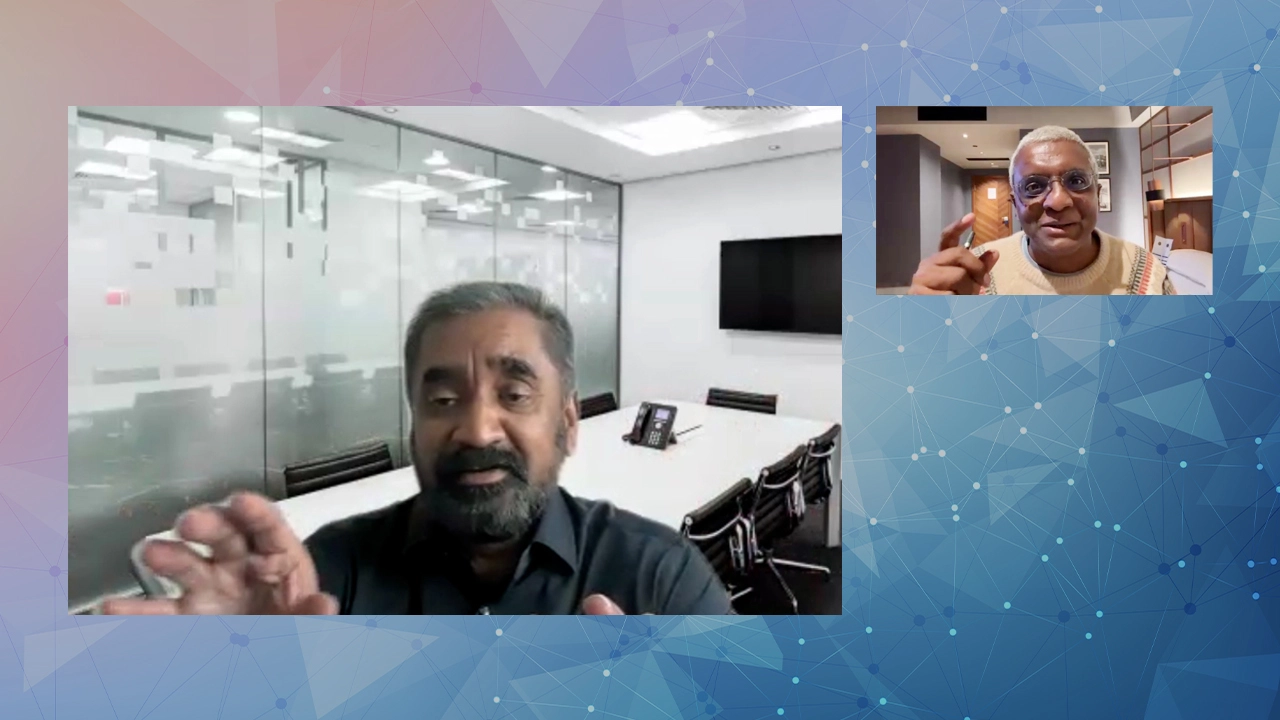Data and digital are the new success factors in wealth management

Long a bastion of personalised service by relationship managers, the wealth management sector is undergoing a transformation as clients demand better service and as digital delivery enables new models. Wealth management firms need to combine “high-tech” with “high-touch” to stay ahead.
- The ability of clients to aggregate information, together with data analytics, may have the biggest impact in the discussion about digital transformation in wealth management
- While robo-advisors have received plenty of attention in recent years, their impact on wealth management revenue may be less than industry players expect
- Leading players need to become fully digital, deliver a full suite of value-added services, and upskill their relationship managers to suceed in this industry
The global wealth management business is big and growing bigger, making it very attractive for banks around the world. And as wealthy individuals’ lives become increasingly digital, they also expect to receive personalised financial solutions from their financial advisors based on their own life goals, while also questioning the fees they pay for financial advice. Understandably, they wonder why they don’t get the same customer experience from their relationship manager (RM) that they get from retail and entertainment or other industries. Unsurprisingly, several studies show that many of Asia’s HNWIs will consider leaving a private bank if digital isn’t a core part of its offering.
Even though client needs are changing, many wealth managers and even financial technology firms (fintechs) still focus their innovation on existing wealth management practices rather than reinventing the business or creating value in new ways. While the vast majority of HNWIs use online banking, for instance, a recent survey by PwC found that only 25% of wealth managers offer digital channels beyond email. Despite the resistance to change, an intensifying competitive landscape is compelling private banks to do more.
Data analytics may have the greatest impact
Much of the discussion about digital transformation in wealth management has focused on solutions such as new tools to support RMs, robo-advisors, automation to increase efficiency and virtual reality. The biggest impact, however, may well result from the ability of clients to aggregate information about their assets, compare performance between advisors and shift to top-performing RMs. This aggregation of data, Mesitis chief executive officer (CEO) Tanmai Sharma said, means that clients will be able to take their data out of one bank and give it to somebody else to do analysis.
What will happen next, he said, is that people will compare products across banks. “People don’t put all their money in one bank. People diversify – we see clients work with five or six private banks. Every client I know of has an Excel spreadsheet and updates it. Now, smarter RMs will start advising on other assets.”
Martin Stadler, ambassador at Switzerland-based digital wealth management firm Flynt Bank, similarly said that his firm uses digital data to create a virtual family office. Clients can use the insights for automated investment control, liquidity forecasting, real estate management and other services. Using aggregated data intelligently increases transparency and shifts control towards the client, who can give or deny advisors access to any parts of the data.
To deliver the leading-edge insights clients demand, an increasing number of firms are working on predictive analytics and artificial intelligence (AI) to deliver new value and personalised investment offerings matched to a client’s specific goals and risk profiles.
The digital transformation of wealth management
Along with delivering personalised insights, leading wealth management firms are working on a slew of other digital initiatives. DBS Bank, for instance, found that a combination of digital and face-to-face communications led to digital channel usage more than doubling. And digital delivery has enabled Pictet to use virtual reality to take clients on a “virtual field trip” to see their investments abroad.
Alternative wealth managers are also offering innovative solutions to increase their competitiveness. InvestGlass, for instance, leverages tools such as artificial intelligence and predictive analytics to enable sales advisors to identify which clients to contact first, why to call and what advice to provide, rather than spending 70% of their time searching for leads.
Well-established players have also established innovation labs to develop new solutions. UBS has used wealth management innovation labs in in Zurich, London and Singapore to identify new products and services, for instance. One recent pilot analysed clients’ facial expressions to uncover biases that could prevent effective decision-making, a result which RMs can use to provide better support. Not to be outdone, Credit Suisse set up an innovation hub in Singapore that now has 200 staff.
The robo-advisor alternative
While robo-advisors have received plenty of attention and wealth managers are beginning to leverage them, their impact on wealth management revenue may be less than industry players expect. Although usage of robo-advisors to select low-cost exchange-traded funds (ETFs) and automate portfolio rebalancing is likely to grow significantly, revenue will continue to face under downward pressure. More revenue is likely to come from personalised advisory services.
That said, private banks are building or buying robo-advisors to augment their capabilities. Credit Suisse uses robo-advisors to augment investment advice that RMs give to clients, for instance, and Vanguard has migrated wealthy clients in the US to a robo-advisor. The result is that usage of passive asset management products is likely to increase (Figure 1).

Fintechs that have developed robo-advisors are also seeing market shifts. Whereas Singapore-headquartered StashAway originally focused on direct sales to the mass affluent, it is now getting inquiries from family offices and asset managers. “If you are an external asset manager with less than 100 people,” StashAway CEO Michele Ferraro stated, “It’s not obvious that it makes sense to build your own digital framework.”
The financial impact of going digital
This digital transformation isn’t cheap. Leading firms expect that they may spend nearly one-quarter of their revenue on technology within five years. Standard Chartered Bank, for instance, has reportedly spent at least $250 million on wealth digitisation.
Companies that have made the switch to digital are gaining a competitive advantage. Early adopters of digital technology say they have improved customer experience, reduced operating costs, increased efficiency and improved regulatory compliance.
Case studies
Flynt
After the financial crisis in 2008, Flynt Bank ambassador, Martin Stadler, explained, HNWIs started to diversify in order to reduce risk and get “best-of-class” advice. Rather than working with a single firm, as happened in the past, wealthy individuals now work with three to four banks, several financial advisors, and tax lawyers.
Flynt, a Switzerland-based start-up that received a private banking license in July 2017, provides the digital infrastructure to bring all them together. “Having the data aggregated and using it intelligently increases transparency and shifts control towards the client, who can give or deny advisors access to any parts of the data.”
“We don’t think that we are going to replace the trusted advisor,” Stadler added. “Our platform is not giving advice. We are providing an infrastructure to interact with your wealth.” While private banking will continue to be a people business, he believes the trust created by technology and the controls that secure data in the safest way will be the second strong pillar of wealth management.
The result, Stadler expects, is that the value chain is going to break up. Within ten years, he expects that HNWIs will pay their advisor based on their impact rather than assets under management. “At the end of the day,” he observed, “independent advisors will be compensated.”
BNP Paribas
BNP Wealth Paribas Asia chief digital officer, Vivien Jong, stated, technology spend in wealth management has been increasing over the past two years and there has been a lot of focus around digital, cyber, AI and analytics. Since wealth managers can get better insight into the behaviour of their clients, clients will receive higher levels of servicing, advice and product offerings.
How analytics is used, though, depends on the client and their life stage. Self-starters and entrepreneurs, for instance, are busy with their careers and may farm out financial planning to a wealth manger. Some clients may prefer to be advised or to be self-servicing, depending on how much time they have and their behaviour. Other clients read a lot, have heavy dialogues with their RM and try to check out all the sources before they take a position.
Clients are going “way beyond robo,” Jong said. “Clients are more engaged and have so many expectations. They want to know the status of their wealth, to ensure a full understanding.” They are very well informed, whether through social media or other sources, so just one model such as a robo-advisor won’t work for them.
One challenge, Jong said, is that wealth management technology is lacking compared to retail such as banks or fashion outlets. The situation has been improving, though, due to the spend in the past two to three years and RMs today are given the best tools to service clients. BNP Paribas has already launched tools to help the RMs and plans to do more to enable them to provide better service.
Mesitis / Canopy
Expanding upon how data aggregation will happen, Mesitis CEO Tanmai Sharma said that whereas banks in Europe are required under PSD2 to open application programming interfaces (APIs) to fintechs, Asia is only at the start of that happening.
“Up until now,” Sharma said, “a client’s data resided with their private banker.” Firms such as Mesitis will provide the aggregation and analytics. “We can take data from some banks through APIs and others by their bank statements. You leave data with us. The expectation is not for the client to do something. It’s up to us to make it work. It will fundamentally change wealth management.”
What will happen next, he expects, is that income will migrate to one or two banks. Some private banks may thus face consolidation of income as clients leave non-income-producing assets at one bank and do their trading at another bank. “It has an impact on bottom line.”
Overall, Sharma believes, rationalisation will be good for private banking. At the same time, RMs who can become trusted advisors will make substantially more money. “The total money made by the system will not reduce. Instead, “income becomes lumpier.”
Strategic implications for wealth management
To succeed in an increasingly digital wealth management ecosystem and maintain or grow their revenue, leading players will likely need to undertake at least three essential shifts.
First, they will need to become fully digital. Rather than providing simple solutions such as giving tools such as iPads to RMs and automating the back office, they will need to implement digital tools for account aggregation and use predictive analytics as well as AI to add value to the customer.
Second, they will need to deliver a full suite of value-added services for increasingly demanding clients. More than just executing trades and providing reports, they will need to provide a package of tax, legal, educational and other services.
Finally, RMs will need to upskill tremendously to deliver these services. Only RMs who become truly trusted advisors and provide added value digitally across all channels, with a level of customer experience that meets or exceeds what clients receive from entertainment firms or high-end retailers, are likely to take a bigger share of revenue.
Keywords: Wealth Management, Fintech, Data Analytics, AI, Robo-advisor, ETF
Institution: CCB, China CITIC Bank, CBRC, Ant Financial, Alibaba









Leave your Comments